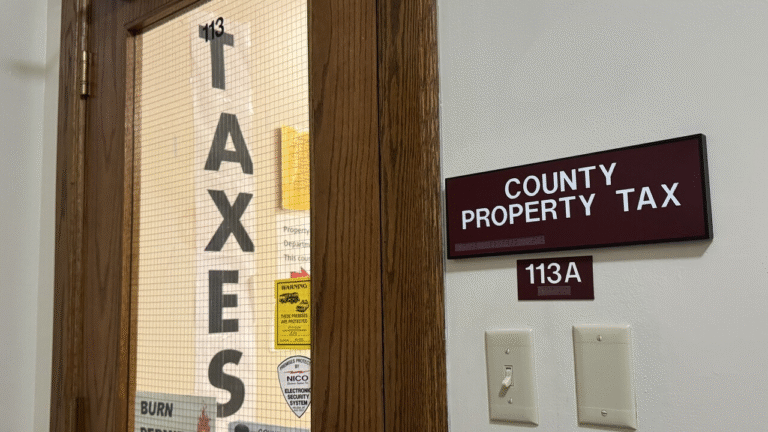
Development of property prices in Switzerland: What are the forecasts for the real estate market? Which factors are decisive?
Home prices rose 1.5 percent year-on-year. They recorded the highest increase since mid-2022. Compared to the previous year, homes rose by 3.2 percent, which corresponds to 2.8 percent adjusted for inflation. The offer and inventory rents were in the 1st Quarter of 2025 by 2.2 percent and 3.2 percent above the previous year’s level.
The momentum in offer rents decreased significantly. The lower reference interest rate in March 2025 is likely to dampen the rise in existing rents in the coming quarters.
UBS Swiss Real Estate Bubble Index in the 1st Quarter 2025: moderate
The UBS Swiss Real Estate Bubble Index rose in 1 Quarter of 2025 slightly from 0.25 to 0.29 index points. The risk of a real estate bubble is thus classified as moderate.
The low cost of using residential property compared to rent, the overall moderate demand for mortgage and the further slowdown in residential construction make a significant price correction seem unlikely.
What is the UBS Real Estate Bubble Index and how is it calculated?
The UBS Swiss Real Estate Bubble Index shows the risk of a possible real estate bubble – of a significant overvaluation of real estate and the risk of an impending price drop – on the Swiss real estate market. When calculating the bubble index, UBS economists use a model with various factors:
- Price-rental and price-income ratio (foundation)
- Real price change rate over 3 and 10 years (dynamics)
- Cost comparison purchase-rent (costs)
- Mortgage volume-to-income and pure access to the inventory (environment).
Depending on the current value, the real estate bubble risk is divided into the following four categories:
- Acute (above 2)
- Increased (between 1 and 2)
- Moderate (between 0 and 1)
- Low (below 0)
UBS Swiss Real Estate Bubble Index
Line chart with 165 data points.
1. Quartal 2025
The chart has 1 X axis displaying Die Grafik zeigt das Risiko einer Immobilienblase in den letzten 40 Jahren. Im Jahr 2024 zeigt der Swiss Real Estate Bubble Index Werte zwischen 0 und 1 an, was der Einschätzung von moderat entspricht. . Data ranges from 1984-03-31 00:00:00 to 2025-03-31 00:00:00.
The chart has 1 Y axis displaying Standardabweichung . Data ranges from -1.72 to 2.31.Die Grafik zeigt das Risiko einer Immobilienblase in den letzten 40 Jahren. Im Jahr 2024 zeigt der Swiss Real Estate Bubble Index Werte zwischen 0 und 1 an, was der Einschätzung von moderat entspricht.StandardabweichungUBS Swiss Real Estate Bubble IndexUBS Swiss Real Estate Bubble Index1. Quartal 2025UBS Swiss Real Estate Bubble Index198419861988199019921994199619982000200220042006200820102012201420162018202020222024-2-10123
End of interactive chart.Read more

Download detailed analysis now
Know more, understand more: In the current edition of the Swiss Real Estate Bubble Index you will find the complete analysis of the Swiss housing market.
What is the forecast for the development of the real estate market in Switzerland?
Despite being more attractive for the next quarters Financing conditions a slowdown in home price increases. Economic growth in Switzerland threatens to lose momentum in view of the current trade policy. The increasing uncertainty regarding jobs and income is likely to negatively affect the demand impact on homes. Home ownership is likely to increase overall by 3 to 4 percent this year.
The risk map shows in which communities there is a risk of overheating the real estate market
The map shows the price development of the past five years for all 106 economic regions in Switzerland as well as an indication of the regional risk based on the development of the price-income and price-rent ratio (perspective foundation).
- High imbalances exist practically exclusively in the tourist regions of Graubünden. This is a consequence of the second home boom against the background of the limited offer.
- In western Switzerland there are increased imbalances in the Lausanne and Yverdon regions. There is no increased imbalance in the Geneva region as a result of the last below-average price development.
- We only see a high imbalance in the primary housing markets of German-speaking Switzerland in the Einsiedeln region.
- In general, the ratio of purchase prices to rents has decreased within a year in a large part of the regions. At the same time, property prices have risen more in many places than income.



